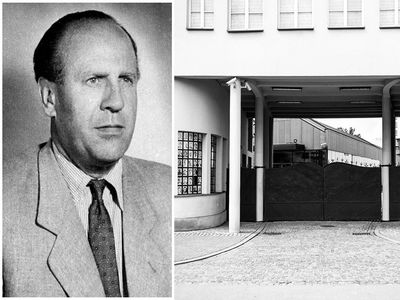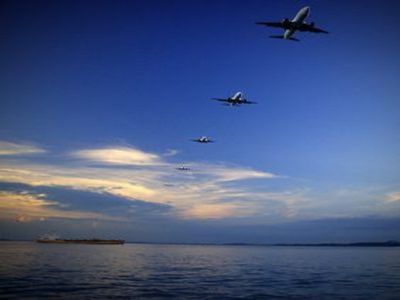Search Results
Rivers
Please select your preferred river
Rivers
Idyllic River Cruises
From the spectacular Danube to the majestic Rhine, discover the stunning rivers and waterways of Europe with our brilliant range of river cruises. Featuring fantastic ports of call, hop on board a comfortable and elegant ship and watch the incredible, ever-changing landscapes pass you by.
Cruise Ships
Please select your preferred cruise ship
Ships
Railways
Please select your preferred railway experience
Railways
Remarkable Train Journeys
With our fantastic range of rail holidays, you’re guaranteed a truly unforgettable experience. Discover breathtaking views from the iconic Glacier Express and the Mont Blanc Express, or enjoy idyllic journeys on nostalgic railway lines. From the Spanish Pyrenees to the Italian countryside, see more with our fully escorted tours.
Travel Options
Select your travel option from below
Outbound & Inbound Travel
Search using your town name below or select using the departure points list
Leicester Birmingham Rainham South Mimms Services Wetherby Services Bedford Preston Newcastle under Lyme York Manchester Northampton Stockton Bolton Bury Hilton Park Services Huddersfield Southend Leeds Bradford Chester Coventry Darlington Durham Milton Keynes Newcastle upon Tyne Sunderland Sutton Coldfield Basildon Colchester Stockport Wrexham Birkenhead Brentwood Rochdale Ashton Under Lyne Blackburn Cleveleys Harrogate Southport Thirsk Wakefield Warrington Widnes Hartlepool Keighley Scarborough Watford Lichfield Dewsbury Halifax Lancaster Rayleigh Runcorn Sandbach Services Wigan Blackpool Liverpool Nuneaton Portsmouth Reading Southampton Wolverhampton Luton Selby Wallasey Basingstoke Chieveley Services Frankley Services Oldham Prescot Prestatyn Solihull Colwyn Bay Dartford Leigh Rhyl Rotherham Rugby Sale St Helens Bishop Auckland Crewe London Victoria Macclesfield Middlesbrough Bristol Burnley Northallerton Accrington Chorley Nantwich Ripon Stafford Warwick Altrincham Exeter Formby Knaresborough Llandudno Junction Ringwood Abergele Cardiff Cheadle Hoddesdon Pontefract Stevenage Tamworth Bootle Chester Le Street Gateshead Letchworth Banbury Bridgwater Fareham Guildford Havant Hemel Hempstead Loughton Newton Aycliffe Pickering Romford Washington West Bromwich Dudley Hatfield Bournemouth Cheltenham Cheshunt Newport Taunton Welwyn Garden City Worcester Eastleigh Gloucester Uxbridge Bracknell Cardiff West Services Christchurch Maidenhead Bexleyheath Doncaster Lincoln Aldershot Chesterfield Derby Farnborough Hereford Newton Abbot Swansea Chatham Gordano Services Orpington Bromley Bromsgrove Camberley Croydon Maidstone Bridgend Paignton Sedgemoor Services Weston Super Mare Woking High Wycombe Redhill Staines Totton Gravesend Barnsley Leatherhead Norwich Ross on Wye Stourbridge Kidderminster Slough Stroud Torquay Leicester Forest East Services Sutton Twickenham Hinckley Redditch Hounslow Sheffield Nottingham Stop 24 Services Worksop Oxford Lymm Services Mansfield Stratford Upon Avon Woodall Services Shipley Coalville Leyland Beaconsfield Chester Services Northwich Clacton On Sea Congleton Rawtenstall Ashby De La Zouch Walsall Brighouse Enfield Clacket Lane Services Morecambe Watford Gap Services Ashford Knutsford Services Peterborough Services Fleet Llangefni Pudsey Ware Dunstable Hertford Maidstone Services Mold Epping Grays Uttoxeter Witham Plymouth Medway Pavilion Services Caterham Cobham Services Halesowen Hull Neath Wimborne Minster Donington Park Services Hopwood Park Services Burton Upon Trent Shrewsbury Telford Cambridge Chelmsford Cwmbran Kings Lynn Pontypridd Winchester Services Carmarthen Crawley Llanelli Ipswich Brighton Chepstow Gillingham Port Talbot Yeovil Bognor Regis Poole Scunthorpe Bath Eastbourne Huntingdon Bury St Edmunds Ferrybridge Market Harborough Bamber Bridge Ely Salisbury Stamford Attleborough Dronfield Old Swan Thetford Worthing Boston March Spalding Stowmarket Ellesmere Port Alfreton Blackpool Airport Cardiff Gate Services Retford Beverley Cirencester Driffield Litherland Newbury Ormskirk Wythenshawe Chichester Cleethorpes Cosham Diss Doncaster Services Gainsborough Kettering Kidlington Newmarket Chippenham Harlow Loughborough Lowestoft Swadlincote Abingdon Belper Eccles Epsom Long Eaton Maghull Mexborough Wymondham Crosby Leeming Bar Services Sleaford Spennymoor Urmston Bridlington Heanor Soham St Neots Sutton in Ashfield Kingston upon Thames Magor Services Malton Barnet Didcot Nelson Surbiton Garforth Kirkby Rickmansworth Wellingborough Northampton Services Thurrock Services Leighton Buzzard Cullompton Services Leigh Delamere Services Pease Pottage Services Birchanger Green Services Dover Grantham Services St Albans Hastings Rugby Services Scotch Corner Louth Swindon Blyth Services Dorchester Broadstairs Bromborough Folkestone Kendal Devizes Herne Bay Kidsgrove Peterborough Warwick Services Castleford Cramlington Horsham Seaford Skegness Barrow in Furness Carlisle Hythe Leek Ludlow Witney Ashton-in-Makerfield Biggleswade Haverhill Trowbridge Tunbridge Wells Aylesbury Flitwick Hanley Holywell Lewes Penrith Royal Leamington Spa Wellington Allerton Beckenham Bexhill on Sea Bourne Braintree Brigg Canterbury Castle Bromwich Eltham Felixstowe Guisborough Hove Lancaster Services Melton Mowbray Aintree Billingham Burgess Hill Catford Corby Larkfield Littlehampton Oswestry Rushden Strood Swinton Tonbridge Walkden Warndon Whitstable Andover Atherton Cannock Chingford Mount Cleckheaton Deal East Dereham Filey Horncastle Queensferry Romsey Severn View Services Shirley Walton on Thames Westhoughton Arnold Atherstone Bangor Bearwood Billericay Borehamwood Dagenham Downend Gorleston Gosport Grimsby Hunts Cross Ilkeston Membury Services Moreton Sandbach Sheerness Walton Weymouth Wisbech Bedworth Corley Services Dorking Golders Green Goole Hailsham Hessle Hucknall Ilford Kingstanding Peterlee Pontypool Potters Bar Skipton Swanley Ulverston Winsford Abergavenny Aldridge Charnock Richard Services Clay Cross Fleetwood Halstead Leominster Margate Northfield Royston Sevenoaks South Shields Sudbury Beeston Birchington Bulwell Caerphilly Carnforth Chapeltown Dalton in Furness Ealing FAVERSHAM Frome Hornchurch Illminster Kenilworth Malvern Middleton Northwood Hills Oakham Ramsgate Rochester Sittingbourne Stone Stourport Stratford Warminster Amersham Barking Barry Bletchley Calne Carshalton Chertsey Chesham Corringham Cottingham Cradley Heath Dawlish Denton East Grinstead Farnworth Fordsham Godalming Great Barr Great Yarmouth Harpenden Harrow Haywards Heath Hitchin Huyton Kings Heath Lutterworth Morley Redbridge Ripley Rugeley Ruislip Sheldon Sidmouth Tadcaster Tiverton Towcester Tring Upminster Waltham Abbey Waterlooville West Cliff On Sea Winchester Bispham Whitley Bay Beccles Gorseinon Hyde Barnstaple Heathrow Airport Toddington Services Heckmondwike Skelmersdale Gosforth New Malden Manchester Airport Downham Market Dereham Grantham Oxford Peartree Services Plymouth Ferry Terminal / Plymouth Holyhead Bristol Airport Edinburgh Airport Stansted Airport Woolley Edge Services Newcastle Airport Tibshelf Services Boreham Services Gatwick Airport Birch Services Birmingham International Airport Keele Services Luton Airport Milton Keynes Centre Newcastle Terminal Connah's Quay Flint Leeds - Skelton Lake Services Llandudno Colchester Services Copdock Services Hartshead Moor Services Killington Lake Services Durham Services Kettering Services Strensham Services Bingley Burley in Wharfdale Cross Hills Elland Horsforth Ilkley Immingham Menston Moortown Trowell Services Washington Services Yeadon Camborne Cornwall Services Ilminster Join at Port London Gateway Services Lytham Merthyr Tydfil Michaelwood Services Newport Pagnell Services Norton Canes Services Oldbury Swaffham WhitbyHoliday Type
Please select multiple holiday types
Popular Holidays
Seasonal Holidays
Special Interest Holidays
Search using your town name below or select using the departure points list
Leicester Birmingham Rainham South Mimms Services Wetherby Services Bedford Preston Newcastle under Lyme York Manchester Northampton Stockton Bolton Bury Hilton Park Services Huddersfield Southend Leeds Bradford Chester Coventry Darlington Durham Milton Keynes Newcastle upon Tyne Sunderland Sutton Coldfield Basildon Colchester Stockport Wrexham Birkenhead Brentwood Rochdale Ashton Under Lyne Blackburn Cleveleys Harrogate Southport Thirsk Wakefield Warrington Widnes Hartlepool Keighley Scarborough Watford Lichfield Dewsbury Halifax Lancaster Rayleigh Runcorn Sandbach Services Wigan Blackpool Liverpool Nuneaton Portsmouth Reading Southampton Wolverhampton Luton Selby Wallasey Basingstoke Chieveley Services Frankley Services Oldham Prescot Prestatyn Solihull Colwyn Bay Dartford Leigh Rhyl Rotherham Rugby Sale St Helens Bishop Auckland Crewe London Victoria Macclesfield Middlesbrough Bristol Burnley Northallerton Accrington Chorley Nantwich Ripon Stafford Warwick Altrincham Exeter Formby Knaresborough Llandudno Junction Ringwood Abergele Cardiff Cheadle Hoddesdon Pontefract Stevenage Tamworth Bootle Chester Le Street Gateshead Letchworth Banbury Bridgwater Fareham Guildford Havant Hemel Hempstead Loughton Newton Aycliffe Pickering Romford Washington West Bromwich Dudley Hatfield Bournemouth Cheltenham Cheshunt Newport Taunton Welwyn Garden City Worcester Eastleigh Gloucester Uxbridge Bracknell Cardiff West Services Christchurch Maidenhead Bexleyheath Doncaster Lincoln Aldershot Chesterfield Derby Farnborough Hereford Newton Abbot Swansea Chatham Gordano Services Orpington Bromley Bromsgrove Camberley Croydon Maidstone Bridgend Paignton Sedgemoor Services Weston Super Mare Woking High Wycombe Redhill Staines Totton Gravesend Barnsley Leatherhead Norwich Ross on Wye Stourbridge Kidderminster Slough Stroud Torquay Leicester Forest East Services Sutton Twickenham Hinckley Redditch Hounslow Sheffield Nottingham Stop 24 Services Worksop Oxford Lymm Services Mansfield Stratford Upon Avon Woodall Services Shipley Coalville Leyland Beaconsfield Chester Services Northwich Clacton On Sea Congleton Rawtenstall Ashby De La Zouch Walsall Brighouse Enfield Clacket Lane Services Morecambe Watford Gap Services Ashford Knutsford Services Peterborough Services Fleet Llangefni Pudsey Ware Dunstable Hertford Maidstone Services Mold Epping Grays Uttoxeter Witham Plymouth Medway Pavilion Services Caterham Cobham Services Halesowen Hull Neath Wimborne Minster Donington Park Services Hopwood Park Services Burton Upon Trent Shrewsbury Telford Cambridge Chelmsford Cwmbran Kings Lynn Pontypridd Winchester Services Carmarthen Crawley Llanelli Ipswich Brighton Chepstow Gillingham Port Talbot Yeovil Bognor Regis Poole Scunthorpe Bath Eastbourne Huntingdon Bury St Edmunds Ferrybridge Market Harborough Bamber Bridge Ely Salisbury Stamford Attleborough Dronfield Old Swan Thetford Worthing Boston March Spalding Stowmarket Ellesmere Port Alfreton Blackpool Airport Cardiff Gate Services Retford Beverley Cirencester Driffield Litherland Newbury Ormskirk Wythenshawe Chichester Cleethorpes Cosham Diss Doncaster Services Gainsborough Kettering Kidlington Newmarket Chippenham Harlow Loughborough Lowestoft Swadlincote Abingdon Belper Eccles Epsom Long Eaton Maghull Mexborough Wymondham Crosby Leeming Bar Services Sleaford Spennymoor Urmston Bridlington Heanor Soham St Neots Sutton in Ashfield Kingston upon Thames Magor Services Malton Barnet Didcot Nelson Surbiton Garforth Kirkby Rickmansworth Wellingborough Northampton Services Thurrock Services Leighton Buzzard Cullompton Services Leigh Delamere Services Pease Pottage Services Birchanger Green Services Dover Grantham Services St Albans Hastings Rugby Services Scotch Corner Louth Swindon Blyth Services Dorchester Broadstairs Bromborough Folkestone Kendal Devizes Herne Bay Kidsgrove Peterborough Warwick Services Castleford Cramlington Horsham Seaford Skegness Barrow in Furness Carlisle Hythe Leek Ludlow Witney Ashton-in-Makerfield Biggleswade Haverhill Trowbridge Tunbridge Wells Aylesbury Flitwick Hanley Holywell Lewes Penrith Royal Leamington Spa Wellington Allerton Beckenham Bexhill on Sea Bourne Braintree Brigg Canterbury Castle Bromwich Eltham Felixstowe Guisborough Hove Lancaster Services Melton Mowbray Aintree Billingham Burgess Hill Catford Corby Larkfield Littlehampton Oswestry Rushden Strood Swinton Tonbridge Walkden Warndon Whitstable Andover Atherton Cannock Chingford Mount Cleckheaton Deal East Dereham Filey Horncastle Queensferry Romsey Severn View Services Shirley Walton on Thames Westhoughton Arnold Atherstone Bangor Bearwood Billericay Borehamwood Dagenham Downend Gorleston Gosport Grimsby Hunts Cross Ilkeston Membury Services Moreton Sandbach Sheerness Walton Weymouth Wisbech Bedworth Corley Services Dorking Golders Green Goole Hailsham Hessle Hucknall Ilford Kingstanding Peterlee Pontypool Potters Bar Skipton Swanley Ulverston Winsford Abergavenny Aldridge Charnock Richard Services Clay Cross Fleetwood Halstead Leominster Margate Northfield Royston Sevenoaks South Shields Sudbury Beeston Birchington Bulwell Caerphilly Carnforth Chapeltown Dalton in Furness Ealing FAVERSHAM Frome Hornchurch Illminster Kenilworth Malvern Middleton Northwood Hills Oakham Ramsgate Rochester Sittingbourne Stone Stourport Stratford Warminster Amersham Barking Barry Bletchley Calne Carshalton Chertsey Chesham Corringham Cottingham Cradley Heath Dawlish Denton East Grinstead Farnworth Fordsham Godalming Great Barr Great Yarmouth Harpenden Harrow Haywards Heath Hitchin Huyton Kings Heath Lutterworth Morley Redbridge Ripley Rugeley Ruislip Sheldon Sidmouth Tadcaster Tiverton Towcester Tring Upminster Waltham Abbey Waterlooville West Cliff On Sea Winchester Bispham Whitley Bay Beccles Gorseinon Hyde Barnstaple Heathrow Airport Toddington Services Heckmondwike Skelmersdale Gosforth New Malden Manchester Airport Downham Market Dereham Grantham Oxford Peartree Services Plymouth Ferry Terminal / Plymouth Holyhead Bristol Airport Edinburgh Airport Stansted Airport Woolley Edge Services Newcastle Airport Tibshelf Services Boreham Services Gatwick Airport Birch Services Birmingham International Airport Keele Services Luton Airport Milton Keynes Centre Newcastle Terminal Connah's Quay Flint Leeds - Skelton Lake Services Llandudno Colchester Services Copdock Services Hartshead Moor Services Killington Lake Services Durham Services Kettering Services Strensham Services Bingley Burley in Wharfdale Cross Hills Elland Horsforth Ilkley Immingham Menston Moortown Trowell Services Washington Services Yeadon Camborne Cornwall Services Ilminster Join at Port London Gateway Services Lytham Merthyr Tydfil Michaelwood Services Newport Pagnell Services Norton Canes Services Oldbury Swaffham WhitbyDeparture Date
When would you like your holiday to begin?
Calendar Key
Select Departure Month(s)
How flexible are you?
Duration
Select how long you wish to go on holiday for
Duration Key
*Duration may not be available depending on your current search criteria
Coach Type
Select one or more coach types

Luxuria: The equivalent of business class, state-of-the-art Luxuria is the ultimate way to travel.
- Deluxe, armchair-style seats
- Every seat has its own, fully interactive, touch-screen T.V.
- Selection of double and single seats
- Servery on board
- Climate control
- Plug sockets and USB points

Siver Service: Elegant and stylish, Silver Service offers added comfort and fantastic facilities.
- Specially designed reclining seats
- Spacious rear lounge
- Onboard entertainment and satellite navigation system
- Free personal headphones
- Personal tables

Executive: Executive coaches are modern and comfortable, ensuring a relaxing journey.
- Air-conditioning
- Reclining seats
- Servery on board
- Onboard toilet
Price/Budget
Please select price by Passenger or Total and your preferred budget
Use the pricing tool below:
You have selected £0 - £10000 per person
Use the pricing tool below:
You have selected £0 - £30000 per person
Passengers
Enter the number of adults
Your Drivers
Please select which drivers you would like to travel with.
Find your next holiday



Find a single
room in seconds!
Looking for a holiday with single room availability? Now it's quick and easy to find exactly what you need!

GP90: The Great Pilgrimage & Leger Holidays
In August 2018, thousands of members and representatives helped The Royal British Legion recreate the 1928 Battlefiel...

A Personal Account of Visiting Battlefields in the Centenary Year: Part One
Paul Prendergast is a valued customer of ours who recently embarked on a personally significant Battlefields tour to...

Seen it Live: Formula 1 Spanish Grand Prix
The end of the Formula 1 season may be upon us as the countdown to Abu Dhabi is underway, but it doesn't mean we can'...

Mostar: where its quite normal to see someone jumping off a bridge!
I wasn't sure what to expect from the city of Mostar; all I knew about it was the trouble in the early '90s.

Grand Explorer: Delights of the Costa Blanca, Valencia, Burgos & Cuenca
Our 2015 brochure has introduced some fantastic new tours for 2015, including Our Grand Explorer tour, Delights of th...

David McCormack: Playboy, businessman, saviour, spy: Oskar Schindler's lesser known career with German Military Intelligence 1936-40
Oskar Schindler's name became known to millions following Liam Neeson's brilliant 1993 on-screen performance as the l...

Uncover a deeper understanding of Flanders Fields
The small city of Ypres in Flanders was once the center of the European cloth trade.

Journeys End: The Dugout Experience
With the JOURNEY'S END film released this year, there now comes a rare chance to see it LIVE on the very battlefields...

Florence: artistic treasures, amazing architecture and a rapidly-melting
The final city visit on our tour of the Italian Riviera, Tuscany, and Rome was the Renaissance city of Florence, a ci...

River Cruise vs Sea Cruise: What Floats Your Boat?
Looking to dip your toe into cruising? We know, there's so much to choose from.

The 5 Best Travel Apps for your iOS Device
Just a few short years ago, holidaymakers' suitcases were packed with everything from CD players to cameras and books...

2017 Battlefield Anniversary Timeline - WWI
2017 marks the penultimate centenary year of the end of World War One.

Susies Amazing Grand Explorer Adventure
Sue Clark, one of our customers, has recently returned from her holiday with Leger Holidays.
We offer flexible payment options
Once you have booked your tour either online, or by telephone 01709 787 463 , you have the flexibility of how you pay off the remainder of your balance. You can:
- Use our balance payment facility online to make and track your card payments. You can pay as much as you want up until your final due date or pay it all, the choice is yours.
- Send payments via online banking.
- Send payments via cheque.
- Call us and make a card payment, either a small amount or as lump sum until your final due date.
Our contact and online banking payment details will be on your confirmation invoice to remind you of your choices.









